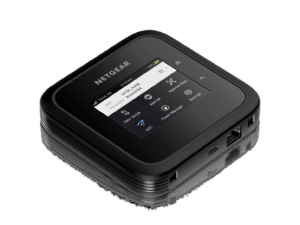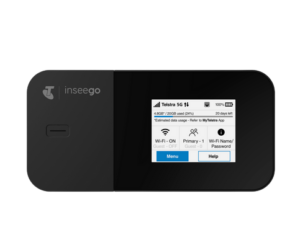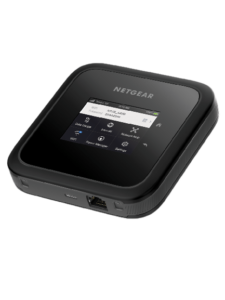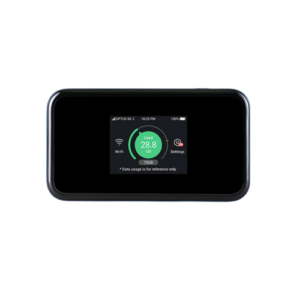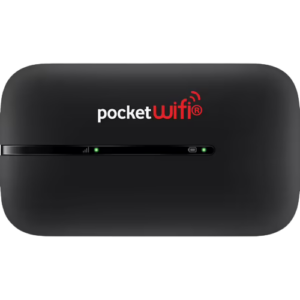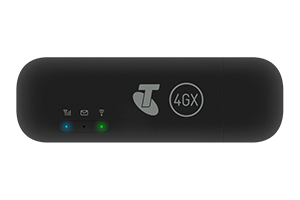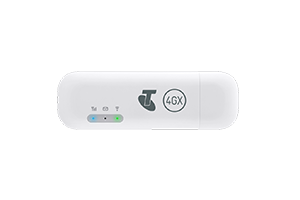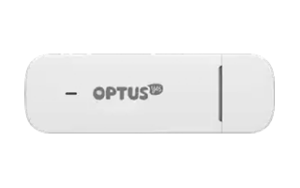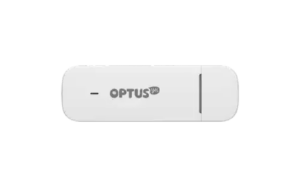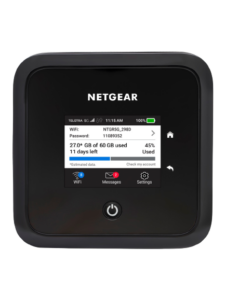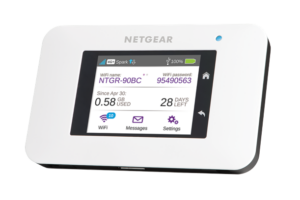Questioning your NBN choices? Pocket WiFi might be the answer.
The best pocket WiFi and WiFi dongles available
- Pocket Wi-Fi/Wi-Fi Dongles Explained
- Best pocket WiFi: Netgear Nighthawk M6 Pro
- Pocket WiFi Options
- Wi-Fi Dongle Options
- FAQ
Pocket Wi-Fi/Wi-Fi Dongles Explained
Any phone with a data-ready SIM in it has its own source of mobile data, but what can you do if you’ve got a device like a laptop, tablet, portable games console – or if your phone’s data plan has run out – and you need to get online?
This is where having a Pocket Wi-Fi router or Wi-Fi dongle can come to the rescue. Both devices perform the same basic function, providing Internet access to devices when connected, with Wi-Fi dongles typically being cheaper than their Pocket Wi-Fi counterparts. That’s because Wi-Fi dongles are unpowered devices, requiring (typically) a USB port on a laptop to power up and run their software for connecting to a mobile broadband network. They’re nicely suited for laptop users who want that single controlled point of connection.
Pocket Wi-Fi devices, sometimes called Wi-Fi Hotspots, are more capable devices that run off their own integrated battery and provide internet routing to a number of devices, in much the same way that your home NBN router provides access to all of your domicile’s various internet-connected gear.
At this point you might be wondering what the difference between using a Pocket Wi-Fi router is and the Wireless Hotspot function on your smartphone is. They’re essentially doing the same job, but a Pocket Wi-Fi router is a dedicated routing device with a smaller screen that isn’t also spending time (and critically, power) performing other smartphone functions. You should get a more stable Wi-Fi connection from a Pocket Wi-Fi router, because they’re purpose built for the task, where on-phone hotspotting can sometimes be a touch on the flaky side, depending on the handset.
The fact that mobile hotspots exist however, has somewhat lessened the market for standalone Pocket Wi-Fi and especially USB Wi-Fi dongles, so your choices aren’t vast when it comes to picking the best option for your needs.
The other critical factor to bear in mind is that both Pocket Wi-Fi and USB Wi-Fi Dongles do require some kind of data-capable SIM installed in order to be able to share an Internet connection at all. You could theoretically use a Pocket Wi-Fi device as a purely local network router, but where’s the fun in that?
Best pocket WiFi: Netgear Nighthawk M6 Pro
If you want the best Wi-Fi hotspot offered by a major carrier in Australia, then that’s the Netgear Nighthawk M6 Pro, hands down. It easily carries the best award too, given that Telstra’s rivals, Optus and Vodafone don’t offer 5G-specific hotspots, but it can be purchased unlocked through a number of retailers locally. The pinch there is that if you want the best, it doesn’t exactly come cheap at $840 so for many getting it through Telstra on a monthly repayment plan might be the smarter financial play.
While fast 5G speeds – including support for mmWave – on board, the Netgear Nighthawk M6 Pro should be able to provide excellent speeds in the right network locations, but it’s also backwards compatible with 4G networks, meaning that it should work pretty much everywhere that Telstra has network coverage.
Need a Telstra data SIM plan to go with the Netgear Nighthawk M6 Pro? Here’s a selection of SIM-only mobile data plans:
Also consider:
Inseego MiFi X Pro 5G
If your budget can’t stretch to the Netgear Nighthawk M6 Pro, consider Inseego’s considerably less expensive MiFi X Pro 5G instead. With a 5050mAh battery and a claimed battery life of up to 10 hours, it should be able to keep your devices online on both 5G and 4G networks for up to 10 hours, though only only on sub-6Ghz frequencies – no mmWave to be seen here! That 10 hour figure is almost certainly for a single device, though it will technically support connecting up to 32 devices sharing a single mobile broadband connection.
Like the Netgear, the Inseego MiFi X Pro is offered by Telstra, but it’s also sold more widely at retail and online unlocked for use on other networks. At $216 outright it’s reasonably priced, but if you did want to or need to split that cost out, Telstra will sell it to you on 12, 24 or 36 month terms.
If you’re after a budget Telstra mobile broadband plan, here’s Telstra’s current cheapest mobile data SIM deal:
Netgear Nighthawk M6
Stepping down from the M6 Pro a little in feature terms – and a fair old amount in terms of pricing, costing $524 at the time of writing – is Netgear’s Nighthawk M6. You do still get hybrid 5G and 4G coverage, but sans mmWave and the higher speeds it can bring. It’s also got a smaller touchscreen in play if that’s important to you. You can bundle the Netgear Nighthawk M6 with any of the plans below:
Optus also makes the Netgear Nighthawk M6 available on contract terms over 12, 24 or 36 months, paired up with a compatible Optus Data Plan:
Telstra 5G Hotspot
The Telstra 5G Hotspot is one of the most plainly branded hotspots we’ve ever encountered. What it does really is what it’s called, because it’s a 5G (Sub-6GHz, Wi-Fi 6) hotspot device that has as its one unique selling point the fact that it’s packing a much larger battery than most competing hotspots, with 10,000mAh on board. That’s not so much to keep it running for days, but more so you could use it as a combo router and battery pack for charging other devices.
You might think that the purely Telstra-branded hotspot would be its cheapest option, but it’s not; at $316 it’s more pricey than the Inseego is, though like other options you can spread that cost out over 12, 24 or 36 months to make it more palatable to your wallet.
Telstra 4GX Hotspot
It’s an older device, but the Telstra 4GX Hotspot has some appeal if you needed a hotspot device and either weren’t within Telstra’s 5G coverage zones, or didn’t need the kinds of speeds you can secure from 5G networks. At just $144 it’s very competitively priced, though as with Telstra’s other hotspots you can bundle it with a plan and pay it off over 12, 24 or 36 months.
The Telstra 4GX Hotspot offers up to 4G Category 11 speeds, which means it’s technically capable of up to 600Mbps down and more than 50Mbps upload speeds. Its 3000mAh battery isn’t particularly large, but if your needs are modest – just sharing out 4G data to a few devices – it could be the perfect match of pricing and functionality.
Telstra Pre-Paid 4GX Wi-Fi Plus
Available only as a prepaid device – which means you can’t bundle it into a contract and have to cover its full $79 asking price upfront – the 4GX Wi-Fi Plus is Telstra’s cheapest hotspot is a simple hotspot – originally made by OEM ZTE – with a 2,000mAh battery, 4G compatibility and peak speeds of just 150Mbps downstream. If your needs are truly modest for Wi-Fi sharing of course, that could be more than enough.
As it’s sold as a prepaid device, you’d need to match it up with a Telstra SIM-only mobile broadband plan:
ZTE MU5001 5G
The ZTE MU5001 has a name like a Star Wars droid – probably coincidental, right? – and is the lower cost alternative if you want a 5G-capable hotspot on the Optus network. As it does with the Netgear, the MU50001 is offered as an option when taking up an Optus postpaid 5G data plan, split over 12, 24 or 36 months. It’s a Wi-Fi 6 capable device with support for up to 32 Wi-Fi users, backed by a 4,500mAh battery pack.
Vodafone Pocket Wi-Fi 4 4G
Vodafone’s sole Pocket Wi-Fi router – sold either on contract terms or as a standalone prepaid device for $99 outright – supports up to 16 simultaneous connections sharing, as the name suggests, a 4G connection over the Vodafone/TPG network. The Pocket Wi-Fi 4G is a lightweight model both in carrying weight and battery life, claiming just 6 hours of battery usage – and probably a little less than that if you did have 16 devices connected to it.
Vodafone bundles the Pocket Wi-Fi 4 4G with 60GB of data if purchased outright, but once that’s exhausted you’d need to pair it with a Vodafone SIM deal:
Wi-Fi Dongles
Telstra dongle 4GX USB Modem
If you want a USB connected dongle these days, your choices are seriously limited. There was a time when this category was bustling with choice, and that time is best described as “at least a decade ago, maybe two”. Telstra’s 4GX USB modem takes the crown from a small field of competitors with support for up to 5 devices once it’s plugged into your laptop’s USB port and connectivity over Telstra’s 4G network – and technically for the very short period it’s still got left to run, Telstra’s 3G network as well. It’ll cost you $99 outright or on contract terms with Telstra over 12, 24 or 36 months, plus your Telstra mobile broadband usage fees.
Telstra Prepaid 4GX USB WiFi modem
Slightly confusingly, Telstra also offers a prepaid 4GX USB Modem, though this one ships in white where the postpaid model is black only. At first glance the Prepaid model might appear a better deal than the postpaid, given it sells for a scant $39, some $60 cheaper than the postpaid variant. However, the prepaid model has slightly fewer coverage bands on 4G than the postpaid model, lacking any kind of 2100Mhz coverage. That might not equate to much if you’re in a suitable coverage area – or it could make a huge difference if you’re not.
Optus USB modem
Optus only offers a single USB dongle style modem device, only sold as a prepaid $39 option. That does get you 4G connectivity on the Optus network at quite a low price, though you would have to factor in the cost of an Optus mobile data plan to go along with it. Optus does provide a SIM with the Optus USB Modem with 4GB of data included; once that’s exhausted you’d need to sign up for a plan, with Optus’ current lowest-cost prepaid data plan running $30 for 25GB – or nearly the cost of an Optus USB modem again!
How we picked the best pocket WiFi dongle devices available
When it comes to WiFi dongles, we evaluate the pros, cons, coverage, specs and pricing of every options available through Australia's landscape of mobile providers. We look to highlight both the best WiFi dongle and pocket WiFi options available in Australia, factoring in things like whether a given device has 5G connectivity, what speeds it offers, how much battery life it has plus the number of wireless devices it can support at once.
There's no one-size-fits-all solution for mobile connectivity, but we hope that the analysis, research and categorisation on this page helps you find the one that suits your specific needs and budget.
Frequently Ask Questions
What’s the difference between a hotspot and a dongle?
What is a WiFi dongle?
What is a Wi-Fi Hotspot/Pocket Wi-Fi?
Why would I want a Pocket Wi-Fi or USB Dongle when my phone can act as a portable hotspot?
Can you get unlimited data on a WiFi dongle or hotspot?
Even though mobile plans have recently shifted to an unlimited data model, there still aren't any options for unlimited WiFi data on a dongle or hotspot specifically.
You can get unlimited data on some home 5G broadband services – Optus’ 5G home for example – but that’s a fixed location service, not a mobile broadband solution.
Still hankering for unlimited data? Your best bet here would in fact be to match up an unlimited data mobile SIM with a cheap phone and hotspot from there. Technically you might get away with doing the same with a Wi-Fi hotspot if your telco’s feeling tolerant, but those plans usually prohibit the use of hotspots in the fine print.


WhistleOut's limited-time deals on NBN 50 plans give you reliable download speeds and unlimited data at a price that won't break the bank.
Related Articles




